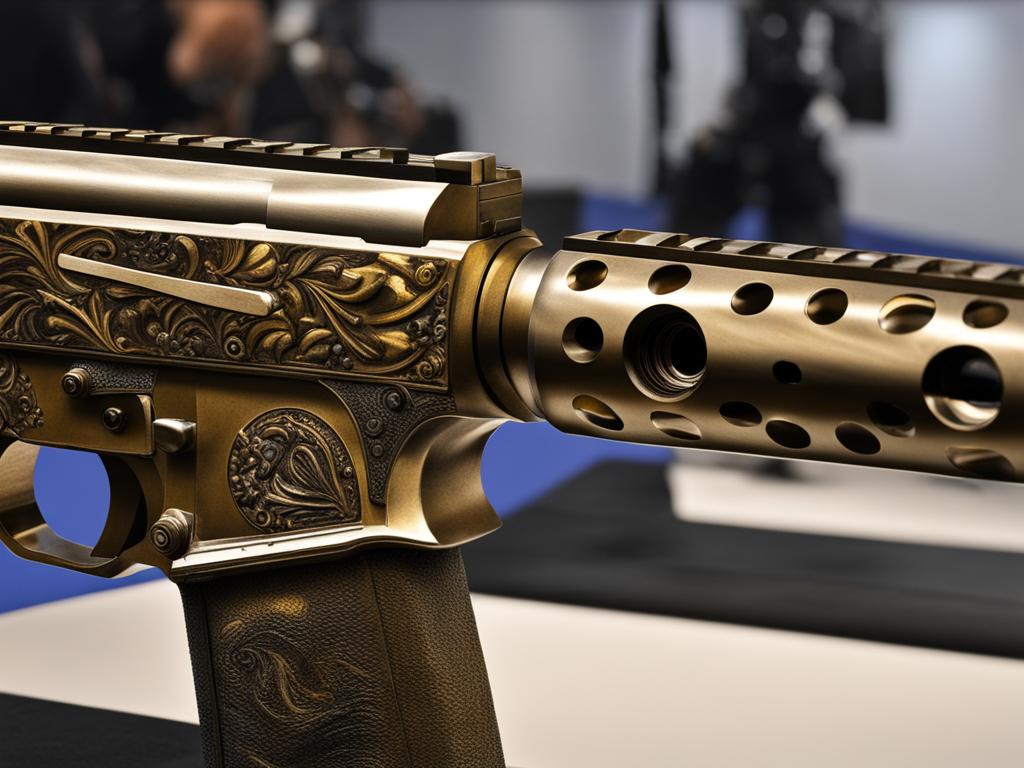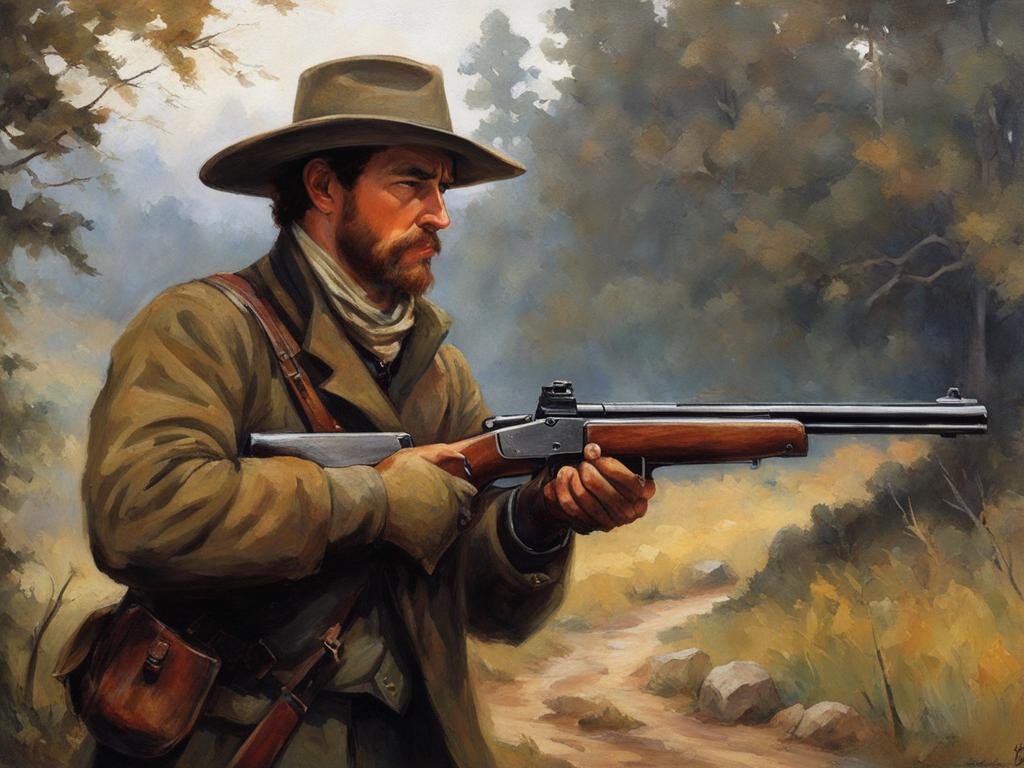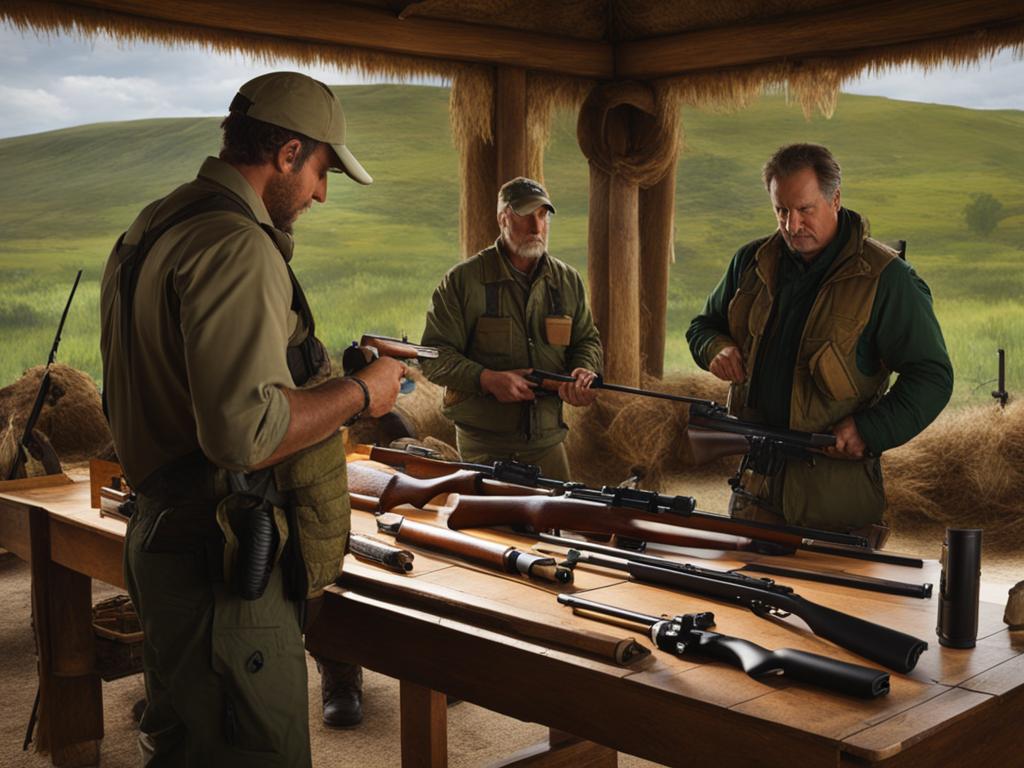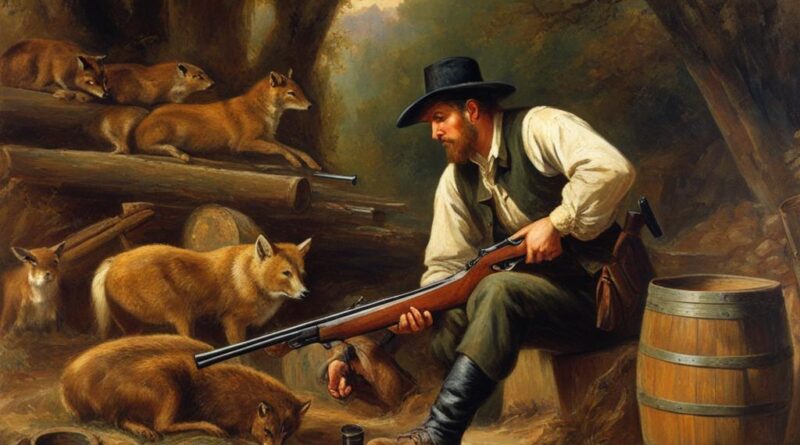What to Check Before Choosing a Firearm for Hunting
When it comes to selecting a firearm for hunting, there are several important factors to consider. Making the right choice is crucial for effective shots and ensuring the safety of both the hunter and the game being pursued. In this section, we will explore the key criteria that should be evaluated before making your decision.
Key Takeaways:
- Consider the physical fit of the firearm
- Adhere to safety rules and regulations
- Take into account the type of game being hunted
- Understand the importance of firearm caliber selection
- Evaluate optics and sights for better accuracy
Selecting a Firearm That Fits You
When it comes to choosing a firearm for hunting, it’s not just about finding the right caliber or type of game. One crucial factor that often gets overlooked is the physical fit of the firearm. Selecting a firearm that fits you properly is essential for optimal control and accuracy while out in the field.
Firearms come in various lengths and sizes, and it’s important to find one that matches your physique. Lengths of shotguns and rifles can vary, so it’s recommended to try out different firearms to find the one that feels comfortable in your hands. The butt of the firearm should rest comfortably in the bend of your elbow, with your finger easily resting on the trigger. This proper fit ensures that you have better control over the firearm and can take accurate shots when it matters most.
https://www.youtube.com/watch?v=l5ilezwXf4w
In addition to physical fit, ergonomic features of the firearm should also be considered. A well-designed firearm should have features that promote comfort and ease of use. Factors such as the weight, length of pull, and grip design can greatly impact your shooting experience. Trying out different firearms and seeking expert advice can help you find a firearm that suits your individual needs and preferences.
Remember, selecting a firearm that fits you properly is not just about comfort. It directly affects your shooting performance and overall hunting experience. Take the time to find a firearm that feels right in your hands, and you’ll increase your chances of success in the field.
Considering the Type of Game Being Hunted
When choosing a firearm for hunting, it is crucial to consider the type of game you will be hunting. Different game animals have varying sizes, habits, and vulnerabilities, which require specific firearms to ensure effective and ethical hunting. By understanding the unique characteristics of the game you plan to hunt, you can select a firearm that matches the specific requirements of your chosen game type.
The game type determines the appropriate caliber or gauge of the firearm. Each state or locality has legal regulations that dictate the minimum caliber or gauge requirements for different game animals. It is essential to be aware of these regulations and ensure that the firearm you choose meets the specific requirements for the game you intend to hunt. Adhering to these regulations not only ensures compliance with the law but also contributes to the ethical treatment of game animals.
Table: Common Game Types and Recommended Firearms
| Game Type | Recommended Firearms |
|---|---|
| Deer | Rifle with a caliber of .243 or higher |
| Waterfowl | Shotgun with a 12-gauge or 20-gauge |
| Turkey | Shotgun with a 12-gauge or 20-gauge, equipped with a turkey-specific choke |
| Small Game (e.g., rabbits, squirrels) | .22 caliber rifle or shotgun with smaller shot size |
| Big Game (e.g., elk, moose) | Rifle with a caliber of .270 or higher |
By choosing the appropriate firearm for the game type, you can ensure that you have the necessary firepower to make clean and ethical kills. This not only contributes to the success of your hunting endeavors but also promotes responsible hunting practices and conservation efforts.
Understanding Firearm Calibers
When it comes to selecting a firearm for hunting, one of the most critical considerations is the caliber. The caliber of a firearm refers to the size of the ammunition and the bore diameter. It plays a crucial role in determining the performance and effectiveness of the firearm.
The importance of caliber selection cannot be overstated. Different calibers have varying levels of recoil, ballistic performance, and ammunition availability. It is essential to choose a caliber that suits your hunting needs, taking factors such as game size and legal restrictions into account. A well-chosen caliber ensures sufficient stopping power and accuracy, increasing the chances of a clean and humane kill.
When deciding on a caliber, it is crucial to understand the trade-offs. Larger calibers generally provide more stopping power but may come with increased recoil. On the other hand, smaller calibers may have less recoil but may lack the punch needed for larger game. Researching specific game requirements and seeking expert advice can help in making an informed decision.
Table: Popular Firearm Calibers and Their Applications
| Caliber | Application |
|---|---|
| .22LR | Small game hunting, target shooting |
| .243 Winchester | Deer hunting, varmint control |
| .270 Winchester | Big game hunting (deer, elk) |
| .30-06 Springfield | Big game hunting (deer, elk, bear) |
| .308 Winchester | Big game hunting, precision shooting |
Understanding the ballistic characteristics and limitations of different calibers is essential for responsible and effective hunting. It is also important to consider factors such as ammunition availability and cost, as well as the suitability of the caliber for the specific hunting environment.
Remember, selecting the right firearm caliber is crucial for a successful and ethical hunting experience. Take the time to research and understand the different options available, and consult with knowledgeable experts to ensure you make an informed decision that aligns with your hunting goals.

Selecting the Right Optics and Sights for Your Firearm
When it comes to hunting, the right optics and sights can greatly enhance your accuracy and precision. Whether you prefer scopes or iron sights, choosing the right equipment depends on your personal shooting style and hunting environment. Here are some factors to consider when selecting optics and sights for your firearm.
Evaluating Magnification Power and Reticle Type
One of the primary considerations when choosing optics is the magnification power. This determines how close your target appears and can vary depending on the hunting situation. For long-range hunting, higher magnification is typically desired, while lower magnification may be more suitable for close-range encounters. Additionally, consider the reticle type that best matches your shooting needs, such as duplex, mil-dot, or BDC (Bullet Drop Compensation).
Considering Red Dot Sights
If you prefer a more compact and lightweight option, red dot sights can be a great choice. These sights use a red dot or holographic projection to indicate the point of impact, providing quick target acquisition and allowing for both-eyes-open shooting. Red dot sights are particularly effective in close-quarters or fast-moving target situations.
Adapting to the Hunting Environment
The hunting environment should also influence your choice of optics and sights. Consider factors such as low-light conditions, dense foliage, or variable weather conditions. For example, if you frequently hunt in low-light conditions, you may want to opt for optics with enhanced light-gathering capabilities or illuminated reticles.
By carefully evaluating these factors and testing out different options, you can choose the optics and sights that best suit your shooting style, target acquisition needs, and hunting environment. Remember to always practice safe shooting practices and follow local hunting regulations to ensure a successful and enjoyable hunting experience.
Considering Fit and Comfort
When choosing a firearm for hunting, it is important to prioritize fit and comfort. A firearm that fits well in your hands and is comfortable to handle can greatly enhance your shooting accuracy and overall experience in the field. Ergonomic design plays a significant role in achieving a good fit and comfort level.
Ergonomics refer to the study of designing equipment that maximizes human performance and well-being. In the case of firearms, ergonomic design focuses on factors such as the length of pull, weight distribution, and grip shape. A well-designed firearm will allow for proper shooting posture, reduced recoil discomfort, and improved control.
When trying out different firearms, pay attention to how the length of pull feels. The length of pull is the distance from the trigger to the butt of the firearm. It should be comfortable and allow for a natural alignment of your eye with the sights or optics. Additionally, consider the weight of the firearm, as a lighter firearm may be easier to carry over long distances. It is also essential to try different grip styles and shapes to find one that feels comfortable and secure in your hand.

Finding the right fit for you
Everyone’s body is unique, so what works for one person may not work for another. It is recommended to visit a local firearms store or shooting range where you can try out different firearms under the guidance of knowledgeable staff. They can assist you in finding a firearm that fits your physique and shooting style, ensuring optimal comfort and control.
| Fit and Comfort Considerations | Importance |
|---|---|
| Length of Pull | Proper alignment of eye with sights/optics |
| Weight | Ease of carrying and maneuvering |
| Grip Shape | Secure and comfortable hold |
In conclusion, choosing a firearm that fits well and provides comfort is crucial for hunting success. Consider the length of pull, weight, and grip shape when testing out different firearms. Remember to consult with knowledgeable professionals to ensure a proper fit that matches your unique physique and shooting style. By prioritizing fit and comfort, you can enhance your shooting accuracy and enjoy a more enjoyable hunting experience.
Budget Considerations
When it comes to choosing a hunting firearm, budget considerations play a crucial role. It’s not just about the initial cost of the firearm itself; you also need to factor in the cost of ownership. This includes ammunition, optics, accessories, and potentially training courses. Finding the right balance between quality and affordability is key.
Researching different options and price ranges is highly recommended. Don’t just focus on the upfront cost of the firearm; also consider the long-term expenses. For example, some firearms may have higher ammunition costs or require specialized accessories that can add up over time. By understanding the full cost of ownership, you can make an informed decision that fits within your budget.
Remember, it’s important not to compromise on quality and safety for the sake of saving money. A reliable and well-made firearm will ensure better performance and durability. Investing in a reputable brand that offers good value for money can save you from potential problems down the line. Take the time to compare prices, read reviews, and seek guidance from experienced hunters to make a wise budget decision.

| Expense Category | Average Cost Range |
|---|---|
| Firearm | $500 – $2000+ |
| Ammunition | $20 – $50 per box |
| Optics | $200 – $1000+ |
| Accessories | $50 – $200+ |
| Training Courses | $100 – $500 |
Table: Example Cost Ranges for Different Firearm Expenses
Importance of Safety and Training
When it comes to firearms and hunting, safety should always be the top priority. A responsible and knowledgeable hunter understands the importance of proper safety measures and ongoing training. By investing time and effort into firearm safety and participating in hunting training courses, hunters can enhance their skills, minimize risks, and ensure a safe and enjoyable hunting experience.
Hunting training courses provide invaluable knowledge on firearm handling, safety rules, and ethical hunting practices. These courses cover a wide range of topics, including firearm maintenance, shooting techniques, hunting regulations, and wilderness survival skills. By enrolling in these courses, hunters can learn from experienced instructors and gain a deeper understanding of responsible hunting practices.
Moreover, these training courses offer practical experience and hands-on exercises that allow hunters to apply their knowledge in a controlled environment. Through simulated hunting scenarios, participants can practice shooting accuracy, decision-making skills, and situational awareness. This training not only enhances hunting proficiency but also instills a sense of responsibility and respect for wildlife and the environment.

By prioritizing safety and participating in hunting training courses, hunters can minimize the risk of accidents, promote ethical hunting practices, and contribute to the preservation of wildlife and natural habitats. Remember, firearms are powerful tools that require proper handling, care, and respect. Whether you are an experienced hunter or just starting, investing in safety and training is essential for a successful and responsible hunting journey.
Conclusion
When choosing a hunting firearm, it is crucial to consider multiple factors to ensure a successful and safe experience.
Firstly, finding a firearm that fits you physically is essential. A well-fitting firearm provides better control and accuracy, enhancing your hunting prowess.
Additionally, consider the type of game you plan to hunt and select a firearm that matches its specific requirements. Choosing the appropriate caliber, based on factors such as recoil and ammunition availability, ensures optimal performance.
Don’t forget about optics and sights, as they greatly impact your hunting accuracy. Select the right ones based on personal preference, shooting style, and hunting environment.
Lastly, keep in mind your budget and the importance of safety. Research different options within your budget and consider the cost of ownership, which includes ammunition, accessories, and potentially training. Prioritize safety by obtaining proper training, following safety protocols, and adhering to local laws and regulations.
By carefully considering these factors, you can make an informed choice when selecting a hunting firearm. So, go ahead and embark on your hunting adventures with confidence!
FAQ
What factors should I consider before choosing a firearm for hunting?
It is important to consider factors such as physical fit, adherence to safety rules, the type of game being hunted, and the legal caliber or gauge requirements.
How do I ensure that a firearm fits me physically?
The butt of the firearm should rest comfortably in the bend of your elbow, with your finger easily resting on the trigger. Trying out different firearms is recommended to find the right fit.
How do I determine the type of game I will be hunting?
Consider the habits, vulnerabilities, and sizes of different game animals to determine the type of game you will be hunting.
How important is the caliber or gauge of a firearm?
The caliber or gauge of a firearm determines its performance and effectiveness. It is crucial to select the appropriate caliber for your hunting needs, considering factors such as recoil, ballistic performance, ammunition availability, and legal restrictions.
What should I consider when choosing optics and sights for my firearm?
Factors such as magnification power, reticle type, and the use of red dot sights should be considered. The selection between scopes and iron sights depends on personal preference and shooting style.
How important is fit and comfort when choosing a firearm?
Fit and comfort are essential for shooting accuracy and overall enjoyment. Consider the length of pull, weight, and ergonomics of the firearm to ensure a well-fitting firearm that allows for proper shooting posture and reduces recoil discomfort.
What should I consider in terms of budget when purchasing a firearm?
Consider not only the cost of the firearm itself but also ammunition, optics, accessories, and potentially training. It is important to find a firearm that meets your needs without compromising quality and safety.
How important is safety and training when using firearms for hunting?
Safety should always be a top priority. Proper training and education in firearm handling and safety rules are crucial. Safe storage of firearms when not in use is also essential to prevent accidents and unauthorized access.
What are the final considerations when choosing a hunting firearm?
It is important to research different options, seek expert advice, and adhere to safety protocols. By considering factors such as fit, game type, caliber selection, optics, comfort, budget, and safety, hunters can make an informed choice and enhance their hunting endeavors.

